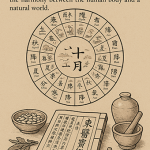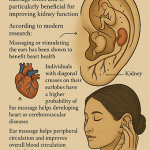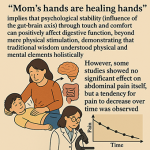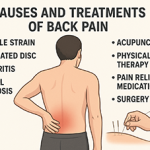





In both Korean and Traditional Chinese Medicine (TCM), the 12 main meridians are a fundamental concept. They are described as a network of pathways or channels through which vital energy, or Ki (pronounced “Gee”), flows throughout the body. The meridians are a key part of the holistic diagnostic and treatment system, with each meridian being associated with a specific organ and a range of physical and emotional functions.
The 12 main meridians are bilateral (present on both sides of the body) and are organized into pairs: one Yin and one Yang. The Yin meridians are associated with the solid organs (Zang organs), while the Yang meridians are associated with the hollow organs (Fu organs). This system is also interconnected with the Five Elements theory (Water, Wood, Fire, Earth, and Metal), which further informs diagnosis and treatment strategies, such as the Saam acupuncture method, a unique aspect of Korean medicine.
Here are the 12 main meridians, with their associated organs, elements, and general functions:
Yin Meridians
Lung Meridian (Hand Taiyin):
Element: Metal
Functions: Regulates respiration, governs the intake of Qi, and is associated with the skin and a person’s emotional state, particularly grief.
Spleen Meridian (Foot Taiyin):
Element: Earth
Functions: Involved in digestion and the distribution of nutrients. It helps maintain muscle tone and regulates blood flow.
Heart Meridian (Hand Shaoyin):
Element: Fire
Functions: Governs blood circulation and the mind. It is considered the “King of the Organs” and is vital for emotional balance.
Kidney Meridian (Foot Shaoyin):
Element: Water
Functions: Stores Jing (sexual and reproductive energy), regulates the reproductive system, and is associated with bone marrow and the production of blood.
Pericardium Meridian (Hand Jueyin):
Element: Fire
Functions: Often called the “Heart Protector,” it circulates energy around the heart and is involved in emotional and spiritual well-being.
Liver Meridian (Foot Jueyin):
Element: Wood
Functions: Circulates Qi and blood throughout the body, regulates menstruation, and is associated with emotions like anger and frustration.
Yang Meridians
Large Intestine Meridian (Hand Yangming):
Element: Metal
Functions: Extracts and processes water from waste material before expulsion. It is also linked to the face, teeth, and emotional release.
Stomach Meridian (Foot Yangming):
Element: Earth
Functions: Digests food and extracts energy, distributing it to other organs. It is also linked to emotional stability and anxiety.
Small Intestine Meridian (Hand Taiyang):
Element: Fire
Functions: Distributes nutrients throughout the body after receiving food from the stomach. It is involved in the mental sorting of information.
Bladder Meridian (Foot Taiyang):
Element: Water
Functions: Removes liquid waste from the body. It is the longest meridian, running from the head down the back to the feet, and is often used to treat back pain.
Triple Warmer Meridian (Hand Shaoyang):
Element: Fire
Functions: This meridian does not correspond to a single organ. It is a functional system that controls metabolism and regulates heat, moisture, and body temperature. It is divided into three “burners” or “warmers” (upper, middle, and lower).
Gallbladder Meridian (Foot Shaoyang):
Element: Wood
Functions: Stores and expels bile from the liver. It is associated with decision-making, courage, and joint and muscle health.
Korean Acupuncture (Saam Acupuncture)
Korean acupuncture has a unique approach known as Saam acupuncture, which builds upon the principles of the 12 meridians and the Five Elements theory. This method, developed during the Chosun Dynasty, focuses on a specific set of points called the Five Shu points on each meridian. Saam acupuncture uses a highly sophisticated system of balancing the meridians based on the “mother-child” and “control” cycles of the Five Elements to treat a wide range of conditions.